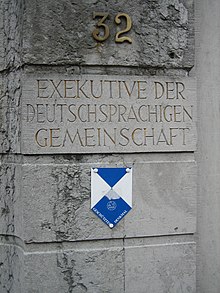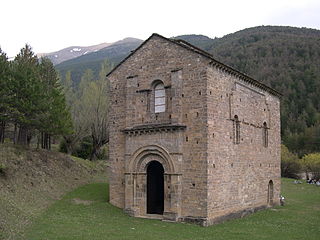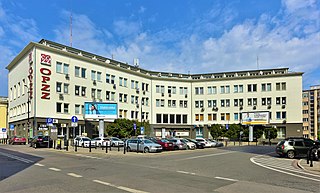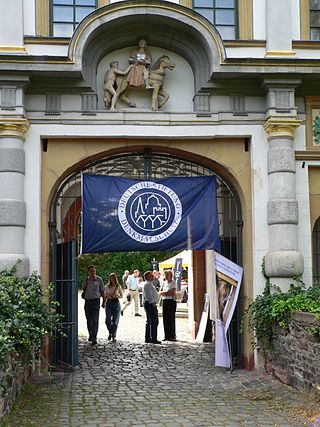
Kulturdenkmal is the official term to describe National Heritage Sites listed by law [1] in German-speaking areas of Europe, to protect and spread awareness of cultural heritage.

Kulturdenkmal is the official term to describe National Heritage Sites listed by law [1] in German-speaking areas of Europe, to protect and spread awareness of cultural heritage.
In Austria, the Bundesdenkmalamt (BDA), the institution in charge of the National Heritage Sites, administers the list of Kulturdenkmal objects, which it formally refers to as Denkmalgeschützte Objekte.
The Institut du Patrimoine is the institution in charge of the National Heritage Sites of Wallonia, which includes the National Heritage Sites of the German-speaking Community of Belgium. Various local websites with public information are maintained, and various initiatives are undertaken to assist owners of protected properties and to increase public awareness, most notably the European Heritage Days, which are called "Tage des offenen Denkmals".
As cultural matters lie largely within the responsibility not of the national government, but of the 16 states (Bundesländer), the 16 respective heritage protection authorities (Landesdenkmalämter) survey and list official monuments.
The Kulturgüterschutz is the institution in charge of the National Heritage Sites of the German-speaking areas of Switzerland. They maintain the inventory of protected objects and also organize the European Heritage Days, which are called Europäischer Tag des Denkmals.

Historic preservation (US), built heritage preservation or built heritage conservation (UK) is an endeavor that seeks to preserve, conserve and protect buildings, objects, landscapes or other artifacts of historical significance. It is a philosophical concept that became popular in the twentieth century, which maintains that cities as products of centuries' development should be obligated to protect their patrimonial legacy. The term refers specifically to the preservation of the built environment, and not to preservation of, for example, primeval forests or wilderness.

Cultural heritage is the heritage of tangible and intangible heritage assets of a group or society that is inherited from past generations. Not all heritages of past generations are "heritage"; rather, heritage is a product of selection by society.

The Ministry of Culture is the ministry of the Government of France in charge of national museums and the monuments historiques. Its goal is to maintain the French identity through the promotion and protection of the arts on national soil and abroad. Its budget is mainly dedicated to the management of the Archives Nationales and the regional Maisons de la culture.

Monument historique is a designation given to some national heritage sites in France. It may also refer to the state procedure in France by which national heritage protection is extended to a building, a specific part of a building, a collection of buildings, a garden, a bridge, or other structure, because of their importance to France's architectural and historical cultural heritage. Both public and privately owned structures may be listed in this way, as well as movable objects. As of 2012 there were 44,236 monuments listed.

European Heritage Days (EHD) is a joint action of the Council of Europe and the European Commission involving all 50 signatory states of the European Cultural Convention under the motto, Europe: a common heritage. The annual programme offers opportunities to visit buildings, monuments and sites, many of which are not normally accessible to the public. It aims to widen access and foster care for architectural and environmental heritage. These events are also known as Doors Open Days and Open Doors Days in English-speaking countries.

The Blue Shield, formerly the International Committee of the Blue Shield, is an international organization founded in 1996 to protect the world's cultural heritage from threats such as armed conflict and natural disasters. Originally intended as the "cultural equivalent of the Red Cross", its name derives from the blue shield symbol designed by Jan Zachwatowicz, used to signify cultural sites protected by the 1954 Hague Convention for the Protection of Cultural Property in Armed Conflict.

The Monuments, Fine Arts, and Archives Section Unit (MFAA) was a program established by the Allies in 1943 to help protect cultural property in war areas during and after World War II. The group of about 400 service members and civilians worked with military forces to protect historic and cultural monuments from war damage, and as the conflict came to a close, to find and return works of art and other items of cultural importance that had been stolen by the Nazis or hidden for safekeeping. Spurred by the Roberts Commission, MFAA branches were established within the Civil Affairs and Military Government Sections of Allied armies.

A bien de interés cultural is a category of the heritage register in Spain. The term is also used in Colombia and other Spanish-speaking countries.
The Quebec Cultural Heritage Directory is an online cultural heritage knowledge dissemination tool for the province of Quebec. The directory is maintained by the province's Ministry of Culture and Communications.

The Deutsche Stiftung Denkmalschutz is a German private initiative founded in 1985 that works for the preservation of cultural heritage in Germany and to promote the idea of cultural heritage management.
The Directorate General of Antiquities is a Lebanese government directorate, technical unit of the Ministry of Culture and is responsible for the protection, promotion and excavation activities in all sites of national heritage in Lebanon. Sarkis Khoury is the Director General with other staff including Joumana Nakhle and Laure Salloum.

The Swiss Agency for the Protection of Cultural Property defines measures to protect cultural property against damage, destruction, theft and loss. For this purpose, a legal basis has been established at the national level and international agreements have been made that oblige Switzerland to respect and support the protection of cultural property not only on its own territory but also on the sovereign territory of other state parties.

Heritage registers in Belgium include immovable heritage such as World Heritage Sites, and National heritage sites, but also intangible cultural heritage. The agency responsible for keeping and updating inventories of immovable heritage is dependent on the region, as is the name for the object, which is called Beschermd erfgoed, Biens classés or Kulturdenkmal depending on the language of the municipality of the location.

The National Institute of Cultural Heritage of Poland is a Polish governmental institution responsible for documenting cultural property and the intangible cultural heritage, as well as for supporting and coordinating their protection.

Beschermd erfgoed is the official term to describe Flemish National Heritage Sites listed by law to protect and spread awareness of Belgian cultural heritage, specifically in Flanders. The term is also used nationwide to refer to national heritage sites. Because Belgium is officially a tri-lingual country, the other nationwide terms used in the rest of the country are the French term Bien classé and the German term Kulturdenkmal.
Denkmalgeschütztes Objekt is a protected object listed on the Austrian cultural property list as kept by the Federal Monuments Office known as the Bundesdenkmalamt (BDA).

The Commission to Preserve National Monuments of Bosnia and Herzegovina, abbr. KONS, is Bosnia and Herzegovina commission (agency) which declares and registers national heritage monuments/sites, including natural/urban/architectural assembles, immovable and movable heritage of historical and cultural importance to Bosnia and Herzegovina, as an institution at state level. The sites of exclusively natural heritage are not subject of Annex 8 and the KONS.

The Tag des offenen Denkmals is an annual event all over Germany. The day of action has been coordinated by the Deutsche Stiftung Denkmalschutz since 1993. Historic monuments are open to the public free of charge. It takes place on the second Sunday in September and attracts several million visitors each year. The largest cultural event in Germany is the contribution of the country to the European Heritage Days.